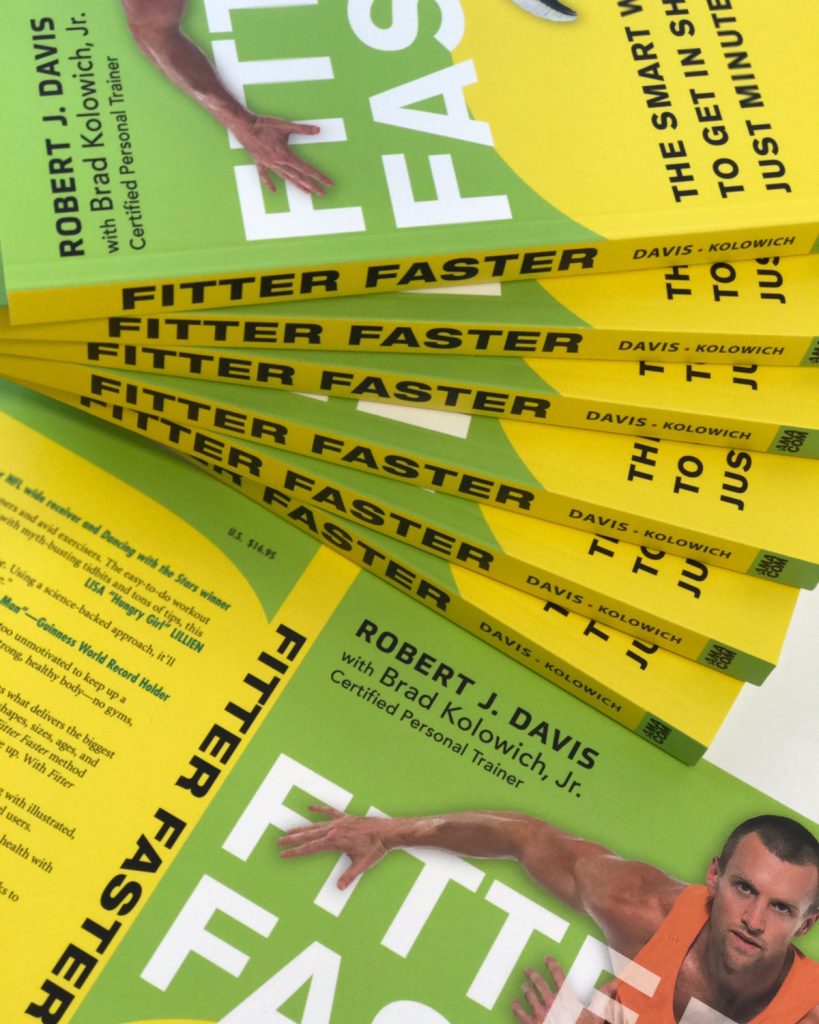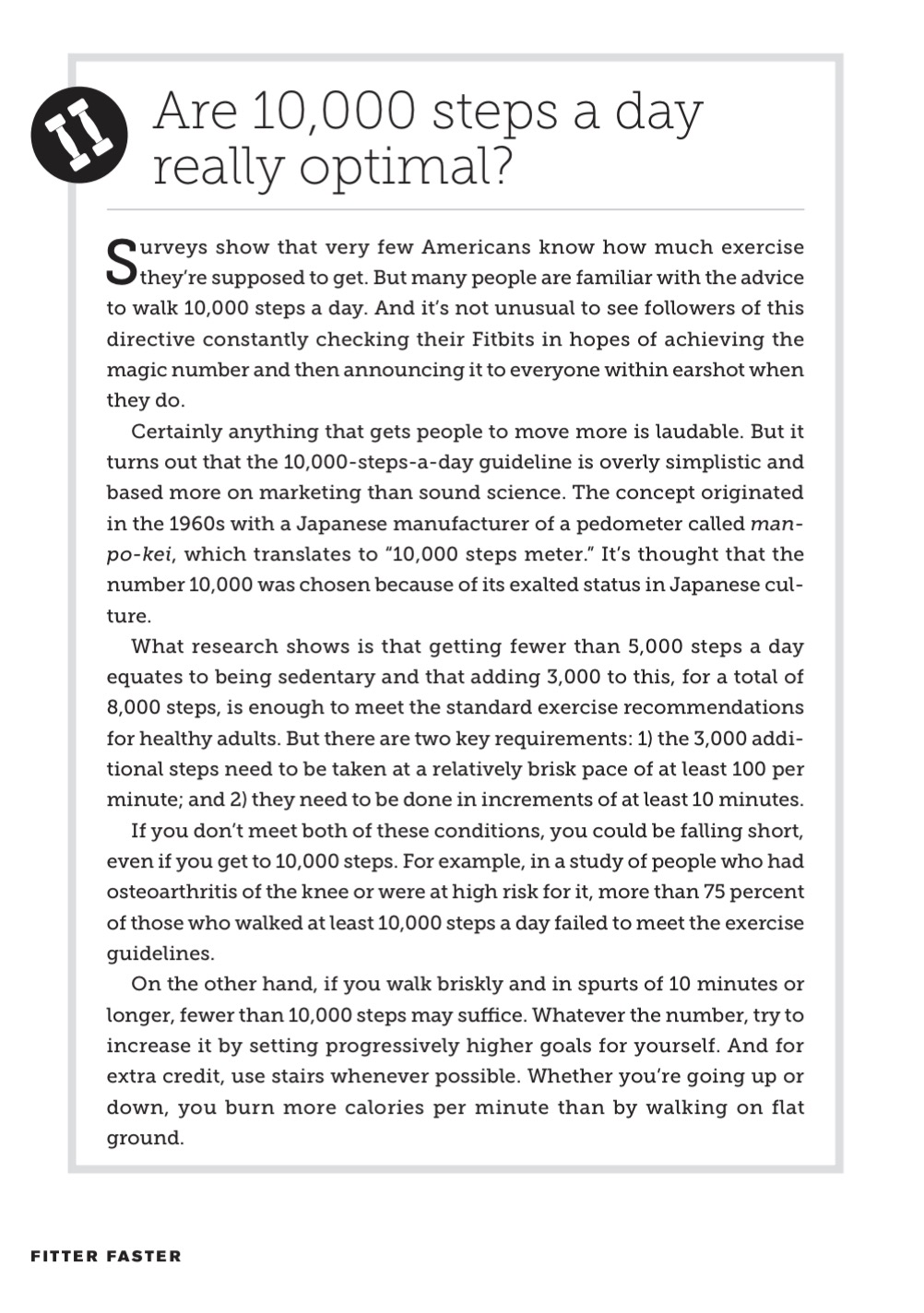Click the photo below to visit www.runningonhappy.com and see what they have to say about Fitter Faster: The Smart Way to Get in Shape in Just Minutes a Day:
For more on Fitter Faster: The Smart Way to Get in Shape in Just Minutes a Day, check out FitterFasterPlan.com!
Enjoy!
Click the photo below to visit CNN.com and learn what Brad’s co-author of Fitter Faster has to say about the best time of the day to exercise:
Make sure to check out this amazing article below, The Sneakiest Strength Exercises to Do at Your Desk, by Elizabeth Millard, adapted from MyFitnessPal.
The Sneakiest Strength Exercises to Do at Your Desk
By Elizabeth Millard

Picture adapted from MyFitnessPal
In many workplaces, being sedentary is the default. Even with standing desks, parking at the other end of the lot, walking to meetings and trying to walk at lunch, most people still spend the majority of their workdays sitting.
Fortunately, there’s a way to sneak muscle-building exercises into your 9–5 — even if your day is packed with meetings. The trick is using isometrics — moves that use contraction and relaxation to engage muscles.
HOW ISOMETRIC EXERCISES WORK
On a basic level, muscles contract in three main ways. Concentric contraction happens when a muscle tenses as you’re shortening it. Eccentric contraction occurs when that muscle tension is prompted through lengthening — such as resistance or lowering a weight.
For example, with a bicep curl, you’d have concentric action as you bring the weight toward you, and eccentric contraction as you lower the weight.
With isometric contraction, muscles tighten without changing length, and there is no movement in a joint, according to Australian-based strength and conditioning coach Andrew Read. He notes that examples include pushing against an immoveable object like a wall or holding plank pose — you’re in one position without movement, but still doing plenty of work.
Sometimes called “static strength training,” isometric exercises can be so effective they bring muscles to fatigue quickly, Read says. The effects last long after they’re done. “Isometrics work, just use them like any other high-intensity method,” Read says. “A little goes a long way.”
TARGETED MOVES
Try peppering these isometric exercises into your workday. Although they seem like modest moves, they can help to keep your muscles working:
HAND PRESS
Clasp your hands or press your palms together in front of your chest, elbows bent, exerting equal pressure in both arms. Hold each press for 10 seconds, then release. Repeat 5–6 times. This will work your biceps, chest and triceps — perhaps while you’re reading emails
AB HOLD
Sit up straight in your chair, with shoulders relaxed. Breathe deeply and engage your abs as if you’re bracing for a punch. Hold for 5 seconds, then breathe out while “crunching” your abs upward as if you’re doing a sit-up. Exhale completely, take a few breaths, then repeat. This can be an especially good exercise during boring meetings, since the action is subtle and no one will know you’re doing a major ab workout while you’re taking notes.
GLUTE SQUEEZE
Strong glutes help to protect your back, especially when you’re chair-bound for most of the day. A simple isometric exercise is to squeeze your glutes and hold the contraction for 10 seconds, then release.
WALL PRESS
To get some movement in your shoulders and engage your core, stand about 3 feet from a wall and place your palms against it at shoulder height and width apart. Press firmly against the wall for 10 seconds, then release. You can also make this into a push-up by lowering your torso toward the wall and pressing back up.
PUTTING ISOMETRICS TO WORK
Keep in mind that the main benefit you’ll see is stabilization of the muscles, according to Edward Laskowski, MD, of the Mayo Clinic. “Since isometric exercises are done in a static position, they won’t help improve speed or athletic performance,” he says. “Isometric exercises don’t effectively build strength but can help maintain muscle strength.”
He adds that isometrics are often used in physical therapy to rehab injured muscles, so if you’re trying to bounce back after injury or other issues, putting some isometric exercises into your everyday schedule can be useful.
There’s also another advantage, especially for work: Isometric exercises can help lower blood pressure, Laskowski notes. That means you might de-stress and sneak in some workout moves at the same time.
Read’s recommendation is to incorporate a few exercises per day, and do them at about 30% of your max effort. From there, you can start to build more into your workdays and increase intensity over time.
Adapted from http://blog.myfitnesspal.com/sneakiest-strength-exercises-desk/
Below, we have included one of the three flexibility tests found in CHAPTER 07: Stretch Out of FITTER FASTER. Make sure to give it a try and find out your score!
For more, make sure to check out FitterFasterPlan.com
Check out our video of Mandy for an example of how to perform this test: IMG_2208
info@bradkolowichjr.com
KoloFit Training Studio
1465 Chattahoochee Ave.
Suite 800
Atlanta, Ga. 30318









